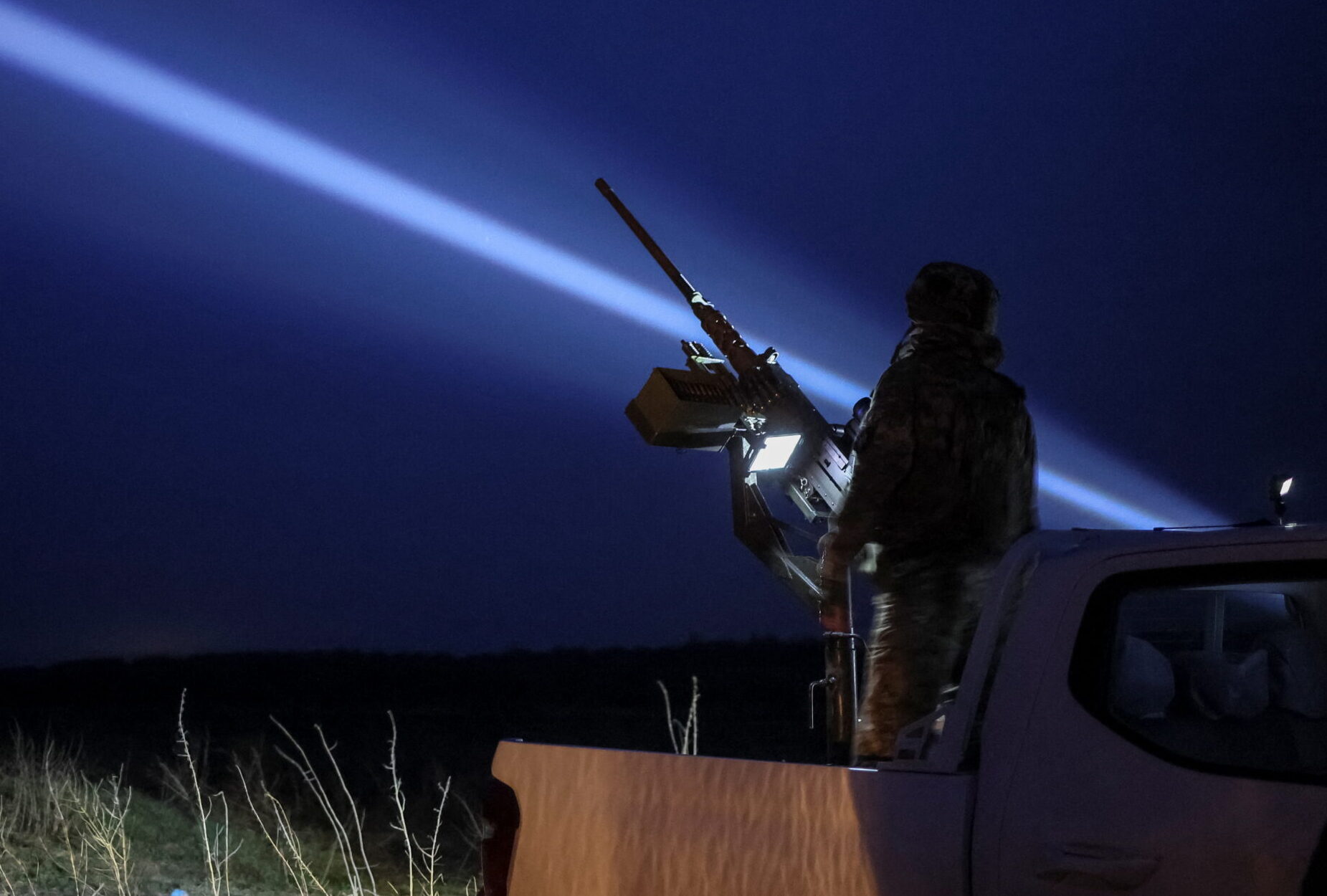Russian military forces intercepted and destroyed 55 Ukrainian drones in an intensive overnight assault spanning six regions, with falling debris igniting a fresh blaze at a strategic oil depot in the border region of Voronezh. The large-scale attack represents a significant escalation in Ukraine’s drone warfare capabilities as both nations intensify military operations ahead of anticipated changes in U.S. foreign policy.
The Russian defense ministry confirmed Tuesday that air defense systems successfully engaged the incoming drones across multiple territories, with six unmanned aircraft specifically targeted over Voronezh. The region’s governor, Alexander Gusev, reported that debris from one of the downed drones sparked a new fire at a fuel storage facility, the same location where a similar incident occurred less than a week ago from another intercepted drone.
Gusev emphasized that while emergency services were actively combating the flames, no casualties were reported from the incident. The governor sought to reassure local residents that firefighting teams were working to contain the blaze and prevent any threat to nearby populations, though the attack marks a concerning pattern of targeting critical infrastructure.
The dramatic increase in drone operations reflects a broader strategic shift by both nations as they race to gain military advantages before Donald Trump’s return to the White House potentially reshapes the conflict’s dynamics. Trump’s campaign promises to terminate crucial military assistance to Kyiv and pursue rapid peace negotiations have added urgency to both sides’ military calculations.
This latest assault demonstrates Ukraine’s growing capability to project force deep into Russian territory, challenging Moscow’s air defense networks and targeting strategic assets. The successful penetration of Russian airspace by multiple drones, despite interception efforts, highlights the evolving nature of modern warfare and the increasing importance of unmanned aerial systems in military operations.
The pattern of attacks on fuel depots and other strategic infrastructure suggests a calculated Ukrainian strategy to disrupt Russian military logistics and support operations. The repeated targeting of the Voronezh facility, in particular, indicates its strategic significance in the broader conflict and Ukraine’s determination to degrade Russian military capabilities.
The timing of these intensified operations appears deliberate, coming as both nations anticipate significant changes in the international support structure for the conflict. Trump’s stated intention to dramatically alter U.S. policy toward Ukraine has created a sense of urgency in both Moscow and Kyiv to strengthen their respective positions before any potential peace negotiations.
The assault’s scale – requiring Russian forces to defend against 55 drones simultaneously across multiple regions – demonstrates the growing sophistication of drone warfare and the challenges facing traditional air defense systems. This evolution in military technology and tactics continues to reshape the battlefield dynamics of the nearly three-year-old conflict.
The incident also underscores the expanding geographical scope of the conflict, with drone operations regularly reaching deep into Russian territory and affecting civilian infrastructure. This extension of the battlefield creates new challenges for both military planners and civilian authorities tasked with protecting critical assets and population centers.
As both nations adapt their strategies to account for potential changes in international support, these drone operations represent a critical theater in the broader conflict. The ability to project force through unmanned systems while minimizing direct human casualties has made drone warfare an increasingly attractive option for both sides, despite the risks to civilian infrastructure and populations.
The sustained nature of these attacks, coupled with their growing sophistication and scale, suggests that drone warfare will continue to play a central role in the conflict’s evolution, regardless of potential shifts in international support or diplomatic initiatives. As both nations race against the clock of changing global politics, the intensity of such operations may only increase in the coming months.



